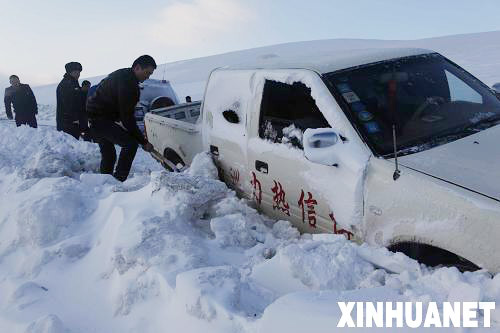
© XinhuanetXinjiang is hit by blizzard and rainstorm.
More than 11,000 houses have collapsed in Yining County, the most seriously damaged area by blizzard and rainstorm in northwest China's Xinjiang Uygur Autonomous Region, local authorities said Sunday.
The county government has sent 950 tents of its 1,000 emergency tents to the residents who have lost their dwellings. It also has provided plastic cloth for others to protect their houses, an official said.
Some residents have been moved to the offices of local governments and schools, as there are not enough tents and plastic cloth.
Xinjiang has suffered the most serious snowstorms in six decades since last December, which seriously affected at least 1.88 million people in Xinjiang after houses collapsed and livestock were killed.
As temperature rises, the snow has been melting and some houses were flooded.
Tacheng City in northwest Xinjiang has suffered from melted snow in its E'min, Tuoli and Yumin counties as temperature rose to 18.1 Celsius degrees last Wednesday, which affected 60,000 people and caused 5,000 houses to collapse.